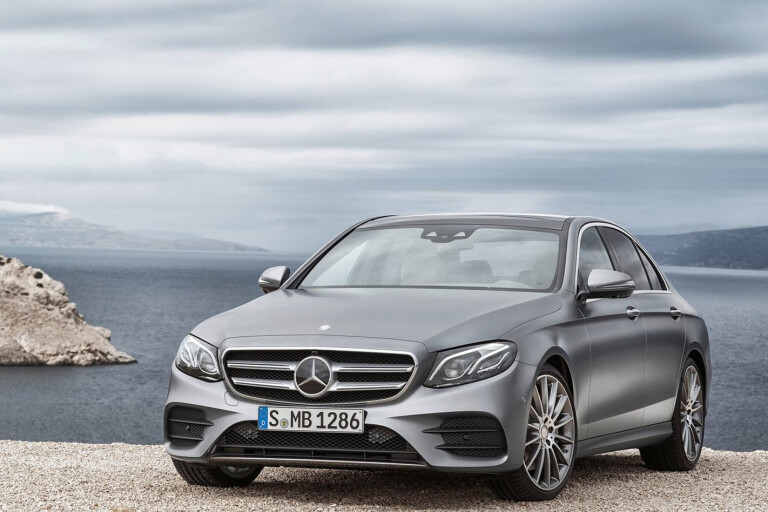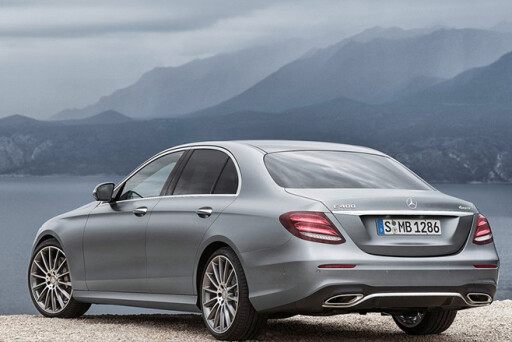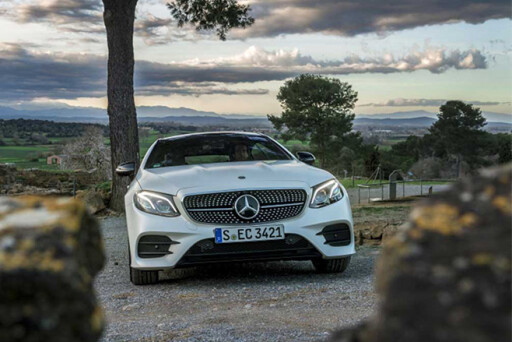
Carmakers of the world, I have an important announcement. If you’re working on autonomous vehicles, please, stop what you’re doing. Why? They’ve already evolved to exactly where they need to be.
A case in point is the new Mercedes-Benz E-Class, a car that has just passed through the Wheels garage. It is wrapped around one of the most advanced driver assist systems on the planet, and you know what? It already ticks all the self-drive boxes we, the driving community, need.
I have one of the longer commutes to Wheels HQ in Melbourne’s leafy eastern suburbia. As a consequence, I spend a long time behind the wheel experiencing everything from high-speed freeway running to the hell that is peak-hour suburbia.
It doesn’t matter if I’m behind the wheel of a half-million-dollar Bentley or a bargain-basement Proton, at times the slog to and from work can bring out the worst in me. But strangely, not during my time in the E-Class.
The E300 saloon I’m driving now includes technology called Mercedes-Benz Intelligent Drive. It’s not full self-driving technology, but it walks a fine line between monitoring what the driver does behind the wheel, and removing the driver from the equation where it feels it necessary. It’s the halfway point between the need to have, and not have, a bag of meat behind the wheel.
Let’s run through a list of what it does:
● Distronic, which automatically adjusts the speed and distance to the car in front while I concentrate on steering
● Adaptive braking, which will hold the E-Class steady on a slope, checks to see if they have pressure and wipes them lightly when it’s raining to keep them sharp
● Active Brake Assist that will pull the E-Class up for you if it senses a collision with the car in front or a pedestrian is about to happen
● A cross-traffic function that watches for cars passing through an intersection and stops you nosing out in front of them
● Active Blind Spot Assist that will watch for traffic in your blind spot and steer away from danger if you attempt to merge dangerously
● Attention Assist that monitors for signs that you’ve fallen asleep behind the wheel and reacts accordingly and fires up its warning systems
● Brake Assist that’s so smart, it can tell if you haven’t hit the brakes hard enough in an emergency and step on them for you
● Drive Pilot that can read road markings and follow the car in front at speeds of up to 210km/h, and steer the E-Class back into its lane
● Electronic stability control that even keeps the E-Class true even if it is being buffeted by severe crosswinds

Let’s now look at what you and I do behind the wheel of a conventional car. Yep, we do what Distronic does, what all the braking functions do, and, well, meatspace variations of all the other associated safety functions listed above, apart from waking ourselves up when we fall asleep. There’s not much more that the Benz can take away for us.
I commuted with all these functions switched on, and after finding confidence in the E-Class’s safety support systems’ safety net, I reckon I became a better driver. One thing I noticed was that I was head-checking for longer before making a decision to change lanes, trusting in the ability of the lane-keeping function to keep the car steady as I looked behind.
I left most of the tedious bits of driving up to the Benz. I still had to cover the brakes and keep a hand on the steering wheel – just in case – but the big Merc pulled up, accelerated, and cruised, while the steering wheel nudged and bumped its way through traffic. All the time I sat there noticing almost as much of the world around me as I would had I been the front-seat passenger.
The only bit of tech I couldn’t get used to, though, was the lane-change assistant that helps the E-Class merge with traffic. If the blind-spot indicator signals the road behind is clear, the E-Class will take control of the steering wheel and help to execute the manoeuvre. It always felt, well, slightly alien as the car took subtle control of the wheel and guided it against the pressure of my hands
But the big take-home for me is the realisation that with a car like the E-Class, the race to autonomy is already waving the chequered flag. It’s now comfortably unobtrusive, and acting more like a guardian angel than a virtual chauffeur. And that’s where it should stop.

The other thing, too, is that the fully autonomous cars we’re seeing evolve are not really cars. They’re gawky pods for shuffling people between the railway station and the office front door, or boxy buses trawling pre-set routes through inner-city malls, or footpath-trawling Daleks delivering pizza and parcels. They don’t look, or act, like cars.
I’m no Luddite – I like my technology – but when I can’t trust my smartphone to work all the time, do I really want to put my life entirely in the virtual hands of the car’s neural network: the automotive equivalent of about 60 smartphones all vying for attention? I don’t think so.
Late last year I fired off a question to Dr Peter Harrop, the chairman of the global forward-looking technology group IDTechEx. I wanted to know if we really needed self-driving cars, or carmakers were just under the illusion we did.
“Is the industry feeding off its own hubris in the race for autonomy? Yes to the extent that automakers and tier one suppliers sometimes predict large purchases by private individuals,” Harrop said. “[We doubt] if that will happen.”
Instead, he predicts the fight worldwide to rid cities of privately owned cars will set the direction in which full autonomy will move. The idea of self-driving taxi services becoming the future of urban transport is more likely, he says.
As for the car as we know it? Harrop points to BMW’s statement that even in the fully autonomous age, there will still be people who enjoy driving, and won’t be willing to pay more to have a self-driving car. Instead, those people willing to pay for fully autonomous tech are likely to be “some wealthy younger people ... so they can tap on their phone non-stop”.
But the future of the car is under threat, he says: “From China to everywhere, most of the next generation do not aspire to own a car.”
A facelift of the Mercedes-Benz S-Class due later this year will also usher in an autonomous leapfrog past the E-Class. It will allow the driver to pre-set the route in the sat-nav system, and then the car will take care of all the accelerating and braking. The driver will need to do little more than sit there and move the steering wheel.
But back to today. I reckon the best thing about Benz’s current system is, find a nice, twisty stretch of road, and almost every bit of tech that interferes with the process of driving turns off with the press of a button.
Just like that, it’s back to being all about me and the car, just the way I like it.

COMMENTS